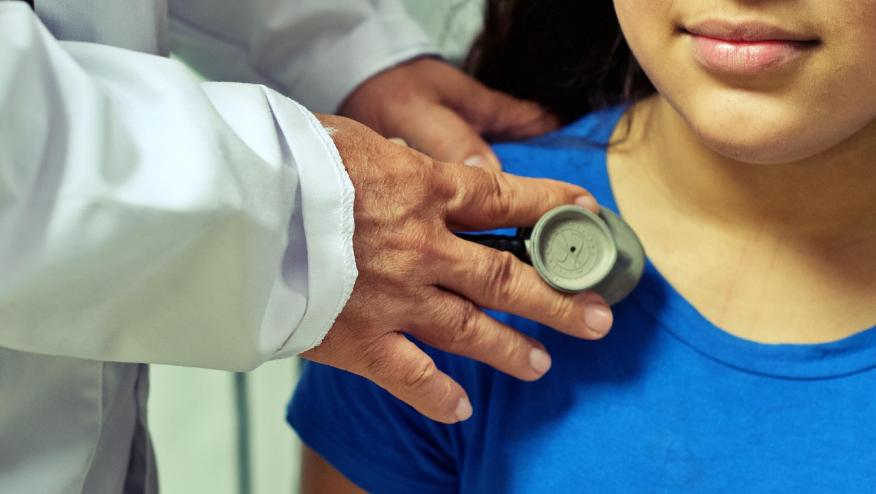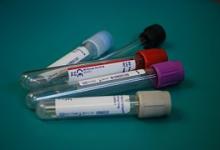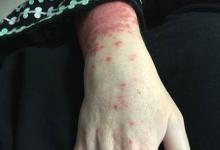ILD in Juvenile Dermatomyositis: Moving Toward Better Outcomes Save

Juvenile dermatomyositis (JDM) is typically recognized for its striking skin rashes, vasculopathy, and muscle inflammation. Less visible, but equally significant, is lung involvement. Interstitial lung disease (ILD) is increasingly acknowledged as a critical driver of morbidity and mortality in this condition. While myositis itself can be debilitating, it is pulmonary disease that often dictates long-term outcomes.
Epidemiological studies have reported highly variable frequencies of ILD in children with JDM, ranging from as low as 14% in some European and North American cohorts to more than 70% in Asian populations enriched for anti-MDA5 antibodies. Recent data from the UK Juvenile Dermatomyositis Cohort and Biomarker Study (JDCBS) suggest that close to one in five children with JDM develop ILD. This prevalence underlines the need for heightened awareness among pediatric rheumatologists and respiratory physicians alike.
The clinical presentation of ILD in JDM is not uniform. Some patients come to attention with insidious shortness of breath and subtle radiological changes, while others remain asymptomatic until abnormalities are revealed on screening pulmonary function tests or high-resolution CT. The most concerning form is rapidly progressive ILD (RP-ILD), a phenotype that can worsen within weeks and result in respiratory failure despite maximal therapy. Although not the most common presentation, RP-ILD carries a disproportionately high mortality, with pediatric series reporting death in up to two-thirds of affected children.
Risk stratification is closely tied to myositis-specific autoantibodies (MSAs). Among these, anti-MDA5 has emerged as the strongest predictor of ILD, particularly RP-ILD. Children with this antibody often exhibit a distinct clinical pattern: mild muscle involvement, but prominent systemic features such as fever, weight loss, arthritis of small joints, digital vasculopathy, and severe cutaneous ulceration. In some Asian cohorts, virtually all anti-MDA5–positive children developed ILD, and mortality clustered in this subgroup. Other MSAs also matter. Anti-synthetase antibodies—including PL-7 and PL-12—are less common in childhood but strongly associated with lung disease, sometimes as the predominant manifestation. Anti-PM/Scl and anti-Ro52 are further linked to pulmonary involvement, with anti-Ro52 in particular recognized as a marker of poor prognosis.
Beyond antibody testing, biomarkers are beginning to inform our understanding of JDM-ILD. Elevated serum IL-18 and CXCL9 levels correlate with reduced lung function and higher systemic inflammatory activity, while KL-6 reflects alveolar epithelial injury. In our cohort analyses, children with ILD were older at onset, more likely to have overlap features, and more often carried MDA5 antibodies. Biomarker levels tracked with disease activity, aligning with observations in adult dermatomyositis cohorts. These findings suggest that integrating serological and biomarker testing into routine practice could improve early detection and monitoring.
Management of JDM-ILD, especially RP-ILD, remains challenging. High-dose corticosteroids alone are rarely sufficient. Instead, there is growing consensus in favor of initial combination regimens. “Triple therapy”—typically glucocorticoids, a calcineurin inhibitor, and a third agent such as cyclophosphamide, rituximab, intravenous immunoglobulin, or mycophenolate—is now recommended for children with high-risk serotypes or aggressive disease. JAK inhibitors have gained increasing prominence, with accumulating case reports of tofacitinib and baricitinib inducing clinical improvement in refractory MDA5-positive ILD. Importantly, practice is beginning to shift toward early use of JAK inhibition at diagnosis, both to improve survival and to reduce steroid burden. Two ongoing trials, MYOCIT and BAR-JDM, are expected to provide the first structured evidence to support this evolving approach.
Even with aggressive immunosuppression, a subset of children continues to decline. Supportive measures such as plasma exchange, extracorporeal membrane oxygenation, or lung transplantation have been used in selected cases, though access and long-term outcomes remain limited. Looking ahead, the most promising development is the application of cellular therapies. CD19-directed CAR-T cells, already revolutionary in hematologic cancers, are now being tested in autoimmunity. Reports of adults with myositis and ILD achieving remission after CAR-T have been followed by a recent case of a child with MDA5-positive JDM and RP-ILD who achieved drug-free remission after this intervention. These remain exceptional experiences, but they suggest that immune reset therapies could eventually transform the outlook for refractory pediatric cases.
The implications are clear. Interstitial lung disease in JDM is not a secondary issue—it is central to prognosis. Early antibody testing, biomarker-guided monitoring, and decisive use of combination immunosuppression are essential in current practice. At the same time, novel therapies, from JAK inhibitors to CAR-T, are reshaping the therapeutic landscape and raising the prospect of better outcomes than previously thought possible. Until then, vigilance and timely intervention remain the cornerstones of care for children with JDM at risk of ILD.










If you are a health practitioner, you may Login/Register to comment.
Due to the nature of these comment forums, only health practitioners are allowed to comment at this time.